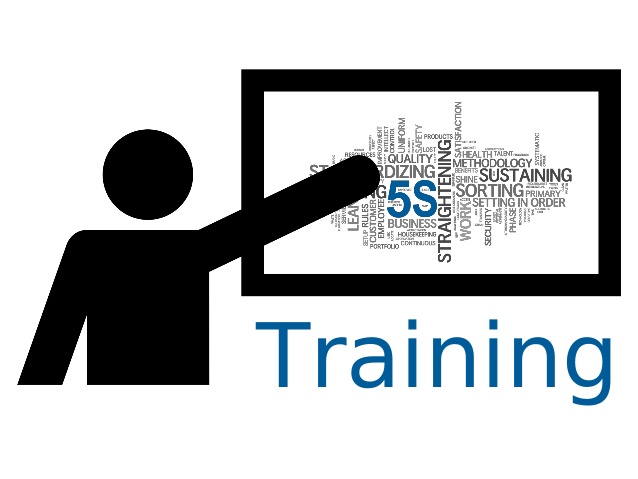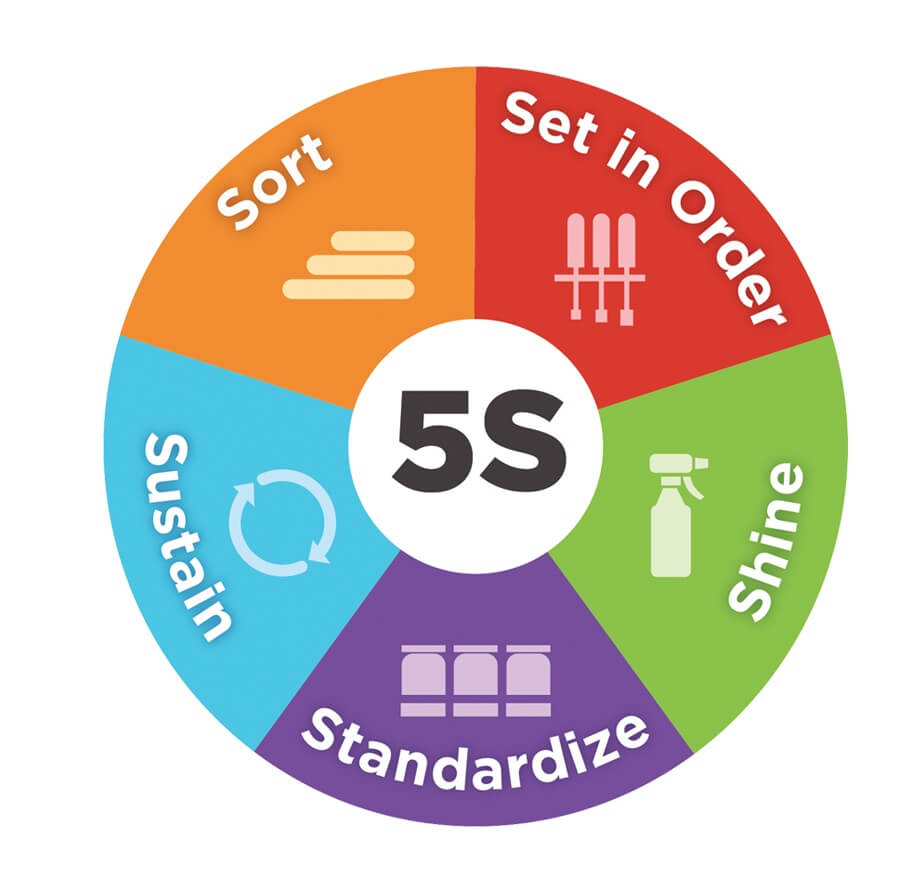User blogs

In today's fast-paced and competitive
business world, workplace success is crucial for any organization to thrive. A
successful workplace not only leads to increased productivity and efficiency
but also creates a positive and safe environment for employees. One of the key
factors that contribute to workplace success is implementing the 5S methodology
and providing 5S trainingto employees.
So, what exactly is 5S training, and
why is it essential for workplace success? 5S training is a workplace
organization method that originated in Japan and stands for Sort, Set in Order,
Shine, Standardize, and Sustain. It aims to improve the efficiency, safety, and
overall organization of a workplace. Let's take a deeper look at why 5S
training is crucial for workplace success.
1) Promotes
a Clean and Organized Workplace
The first step of 5S training is to
sort through all the items in a workplace and eliminate any unnecessary
clutter. This helps in creating a clean and organized workspace, which not only
improves the visual appeal but also makes it easier for employees to find and
access the items they need. A clean and organized workplace also reduces the
risk of accidents and injuries, leading to a safer working environment.
2) Increases
Efficiency and Productivity
The second step of 5S training is to
set everything in order, with designated places for each item. This makes it
easier for employees to find and access the tools and materials they need,
reducing the time wasted looking for them. It also helps in streamlining
processes, eliminating any unnecessary steps, and improving overall efficiency.
With everything in its designated place, employees can focus on their tasks
without any distractions, leading to increased productivity.
Also Read: Correlation and Regression
Analysis training
3) Improves
Quality and Standardization
The third step of 5S training is to
shine, which involves thoroughly cleaning and maintaining the workplace. A
clean and well-maintained workplace not only creates a positive and
professional image but also improves the quality of work produced.
Additionally, 5S training also focuses on standardizing processes, ensuring
that tasks are done consistently and efficiently. This leads to a higher
quality of work and reduces the chances of errors or mistakes.
4)
Encourages Employee Involvement and Ownership
One of the key aspects of 5S trainingis involving employees in the
process. Employees are encouraged to take ownership of their workspace and
participate in the implementation and maintenance of the 5S methodology. This
not only fosters a sense of responsibility and accountability but also empowers
employees.

Organizational bliss is the goal of
many businesses, but it can be hard to reach. Fortunately, 5S training can help you
maximize workplace optimization and get closer to that elusive state of
organizational perfection.
5S stands for Sort, Set in Order (or
Straighten), Shine (or Sweep), Standardize, and Sustain - five steps designed
to create a safe and efficient work environment. When implemented properly
through effective 5S training sessions, this system helps improve efficiency by
reducing waste from excess materials or inefficient processes while also
creating an organized workspace that enhances safety for workers on the job
site.
The first step – Sort – involves
eliminating any items not necessary for current operations or projects from a
given area; this could include anything from old equipment to outdated
paperwork or documents no longer used in daily activities. The second step –
Set in Order/Straighten – requires organizing all remaining items into specific
categories based on how they’re used so they’re easy to find when needed during
production runs or other tasks; labels should also be added where appropriate
so everyone knows what each item is without having to look them up individually
every time they need something specific.
Also Read: QMS Training
Step three - Shine/Sweep - focuses on
cleaning up any messes created as part of sorting out extra stuff before
setting everything else into its place; dusting off surfaces like shelves and
counters ensures there are no hidden dirt piles lurking around corners waiting to
surprise unsuspecting employees with allergies later down the line! Finally
comes standardization: once all these steps have been completed successfully,
it's important to maintain consistency across departments by implementing
standardized procedures such as labeling systems throughout your
organization-wide space, which makes sure everyone knows exactly where things
go even if their job duties require frequent movement between different areas
within an organization complex building structure.
To ensure sustainability over
time—the fifth “S”—it's essential to continue regular trainings involving both
new hires as well as existing personnel who may need refreshers periodically
throughout their employment tenure at your company. This way, everybody stays up-to-date
with best practices related specifically towards achieving maximum benefits
associated with utilizing 5s methodologies effectively. With proper
implementation via successful 5S Trainingsessions at least once
per quarter, organizations will reap rewards, including improved productivity
levels and increased employee morale due to fewer accidents caused by
misplacement confusion resulting in a lack of clarity about expectations
regarding cleanliness standards set forth by the management team members
responsible for ensuring optimal working conditions remain intact every day.

The 5S essentials are an important
part of any workplace safety and efficiency program. In this comprehensive
guide, we’ll discuss the five essential steps to successful 5S training, as well as how it can
help improve productivity in your business.
First and foremost, you must
understand the basics of 5S: Sort (Seiri), Set-in-Order (Seiton), Shine
(Seiso), Standardize (Seiketsu) and Sustain/Self Discipline (Shitsuke). These
five elements work together to create a leaner production process by
eliminating waste and increasing efficiency. The goal is for employees to be
able to identify potential problems before they occur so that corrective action
can be taken quickly.
Next up is implementing a system for
tracking progress on these objectives - this includes setting goals or targets
which should then be regularly monitored against actual performance levels over
time to measure improvement or decline from an initial baseline level. This
could involve using data such as cycle times, defect rates, scrap rates, etc.,
but whatever metrics you choose should reflect what matters most within your
company's operations at any given moment. Additionally, having regular team
meetings where progress updates are discussed will ensure everyone remains
informed about developments in their tasks/projects related directly back to overall
organization objectives.
Also Read: Hypothesis training
Thirdly, comes implementation itself
- here where the rubber meets the road! Depending upon the size &
complexity of your operation, there may be some degree of reengineering
processes already established if necessary; however more often than not,
existing systems just need fine-tuning rather than wholesale change. During the
implementation phase, it's important that all personnel involved receive
adequate training & coaching on new procedures being introduced, plus have
access to ongoing support when required e.g. through mentoring programs,
etcetera, so they're comfortable working within the new environment created via
the introduction updated systems practices outlined earlier stages project
planning execution phases respectively.
Fourthly – once everything has been
implemented successfully, now comes the maintenance stage – sustaining gains
achieved during the previous three steps: Here focus needs to remain squarely
upon ensuring those improvements made don't slip away due to lack of proper
upkeep i.e. continued monitoring evaluation, feedback, loops are put in place
to maintain momentum going forward. Plus 5s trainingcourse continual review
process mentioned above still applies here too; since even best laid plans
sometimes require tweaking to keep them running smoothly! Lastly, remember no
matter how good the system setup may initially look, without commitment from
staff members themselves nothing else really matters in the long-term success
department. So make sure everyone understands the importance of their role
‘bigger picture.’
